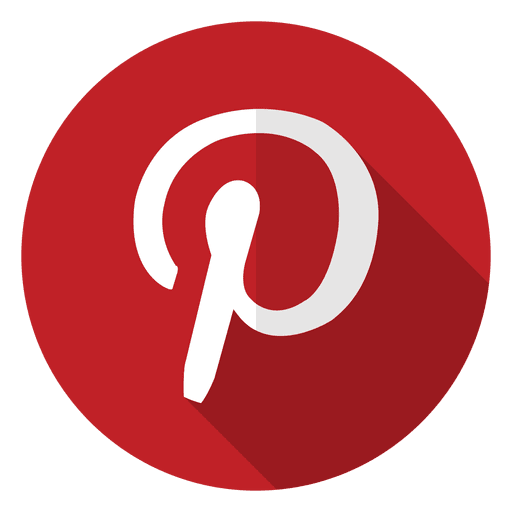How We Started An AI Content Tool And Grew It To 4K Monthly Visitors
I am James Johnson, a content writer turned SEO specialist. Every content writer tries paraphrasing in one way or another.
I, along with a friend (now my partner), started Rewording Tool. It is a website that helps content writers, students, marketers, and professionals rewrite content using AI. Besides this, a user can generate quality paragraphs as well as expand based on their context, check plagiarism and grammar, and fix readability issues for free.
As this is our startup, we haven’t gotten our investment back, but we love the way our website is performing.
I always believed paraphrasing isn’t for stealing original content. For me, it is a technique that can help a writer like me to enhance the quality or meaning of a content.

What's your backstory and how did you come up with the idea?
I studied English Literature because I loved writing since childhood. My first job was as a junior academic writer with a client. This helped me a lot. I came to know the challenges of students when it comes to writing and improved my writing as well!
I started working as a content writer but someone who can optimize content for SEO. My manager gave me Ahrefs for keyword research so that I could write SEO-friendly content. As I was doing routine work, I saw the number of visitors a paraphrasing tool was getting. The tool wasn’t even close to being good, so I thought to do research and find ways of building one myself.
I started learning programming languages but quickly understood that the thing wasn’t meant for me. It means building one myself isn’t an option, and I have to find another person who can do this for me.
Take us through the process of building the first version of your product.
Initially, the process of building the first version of our rewording tool was quite challenging. We started by researching AI technologies.
They could help with paraphrasing and rewriting the content. After much research, we decided to use natural language processing (NLP) and machine learning. We used them to develop our tool.
Me and my partner thought we’d complete the first version in two weeks but it took us 5 weeks to train a model that could provide quick and quality responses!
The first step was to gather a large dataset of text content from various sources, which would be used to train our AI models. We then had to preprocess and clean the data, removing any irrelevant or redundant information. This process was crucial to ensuring our models would learn from high-quality data.
Next, we developed the core algorithms for paraphrasing and content rewriting. This involved implementing techniques such as word embeddings, sequence-to-sequence models, and attention mechanisms. We also had to face challenges. They include keeping things clear, keeping the original meaning, and ensuring good grammar.
The key challenge was to handle the server and its cost. At one point we decided to quit because we couldn’t afford the server cost. My friend had someone who was running his own projects, we requested him and he gave us the server for free. He asked me not to disclose his name or SaaS sites he’s running!
Website traffic and users are growing at around 25% year-over-year. Our monthly traffic is around 3,000-4,000 visitors, with a 2.5% conversion rate to paid premium plans.
Describe the process of launching the business.
After months of development and testing, we were finally ready to launch our rewording tool to the public. We focused heavily on creating content and using smart search engine optimization (SEO). We were already experts in SEO. We made detailed blog posts, video tutorials, and social media posts. They teach our audience about the benefits of using an AI rewording tool.
Our first milestone was to reach 1k visitors and we achieved that in the first 4 months after launching organically through SEO!
I ran a PR campaign and managed to get coverage on bigger websites. Those sites attracted a lot of visitors. Our initial plan was to monetize our site with ads but we gave up this thought and decided to focus on Ads+Subscription before we make our own digital product.
We also ran ads on platforms like Google and social media. They were to get initial traffic and sign-ups. We didn’t get success by running ads because we and our website were new. Creating a user-friendly and visually appealing website was crucial, so we invested significant time and resources into designing a simple and easy-to-use interface.
Within the first few months, we started to see a small but steady stream of new users coming in, primarily through search engine traffic.
We used our savings and a small business loan to pay for the website hosting fees, marketing costs, and initial development costs to finance the business. Fortunately, in those early days, our overhead costs were low. We kept them low with our lean approach and focused on natural growth.
We learned a big lesson. The key is to keep updating and improving our product. We must do this based on user feedback. We have made many updates. Adding new features like grammar checking and plagiarism detection. These changes provide more value to our users
Since launch, what has worked to attract and retain customers?
One of the best approaches has been making high-quality content optimized for SEO. We regularly publish blog posts, videos, and guides. They provide value to our audience and naturally include relevant keywords.
This has helped us rank highly on search engines and drive organic traffic to our website. We also actively use social media sites like Twitter and LinkedIn to share useful tips, interact with our audience, and run paid campaigns to reach more people.
The website currently gets 20,000 organic visitors a month and this is just the start. The website is still very young if we compare it with the giants but we are providing quality and feel like our users are satisfied!

To keep our existing customers, we focus on providing an excellent user experience. We added helpful features. These include grammar checking and plagiarism detection. We added them based on what our users want.
Also, send regular email newsletters. They have writing advice, product updates, and special offers. These emails keep our users engaged.
Partnering with other businesses and influencers in our industry has been successful too. We collaborate with them, which allows us to promote our products to their audiences.
My friend (co-founder) was interested in creating a digital product which we can sell on bigger platforms. We haven't sold our products on Amazon yet because there's a lot of competition there. For now, we're focused on growing naturally. But we will do it by creating great content, using social media, and building a strong brand.
We regularly review metrics from tools like Google Analytics and our email platform. This lets us make data-driven decisions and improve our efforts.
How are you doing today, and what does the future look like?
We're not yet profitable. But website traffic and users are growing at around 25% year-over-year. Our monthly traffic is around 3,000-4,000 visitors, with a 2.5% conversion rate to paid premium plans.
Our key goal is to be profitable in the next 6-8 months. We will do this by optimizing pricing. We may also explore new revenue channels beyond our current freemium model.
On the product side, we plan to expand to new audiences, like academics and legal professionals. In the long term, we aim to grow our tool into a comprehensive AI writing assistant. It will have features like ideation, outlining, and creative writing. We will do this by using advances in natural language processing.
My top advice is to validate your idea. Understand the market before investing too much time and money. Talk to potential customers. Analyze the competition. Be brutally honest about whether there is a true need for your product or service.
Through starting the business, have you learned anything particularly helpful or advantageous?
One mistake made early on was not focusing enough on building our brand name and engaging with our community of users. Our team fixed this by putting more effort into content marketing, social media, and building good relationships with our customers.
A smart decision was to flexibly develop our product by regularly getting feedback from customers and using that to guide what new features we add. This allowed us to be flexible and give customers what they wanted.
We were fortunate that our business took off at a good time when AI writing tools and content marketing were becoming more popular. However, the biggest lesson was the importance of consistent hard work - continuing to build, market, and improve our product over time based on what customers need. Our success was largely dependent on our ability to persevere and adjust to changes.
What platform/tools do you use for your business?
For our website and product, we rely heavily on a tech stack. It has React for the front end, Node.js for the back end, and MongoDB for our database. We use AWS for cloud hosting and deployment. Google Analytics is invaluable for tracking website traffic and user behavior metrics.
On the marketing side, we use Ahrefs for keyword research and SEO optimization. Semrush helps with tracking rankings and analyzing competitors. For email marketing, we leverage Mailchimp to send newsletters and product updates. Canva is our go-to for creating visual assets like social media graphics. Lastly, Hootsuite lets us schedule and manage our social media. We can do this across multiple platforms
Time management and team collaboration are facilitated through tools like Trello for project management, Slack for team communication, and Dropbox for file sharing. Our team found this suite of tools to be cost-effective yet powerful enough to support our current needs as a lean startup operation.
What have been the most influential books, podcasts, or other resources?
“How Any Startup Can Achieve Explosive Customer Growth" by Gabriel Weinberg and Justin Mares.
This book offers a thorough approach to assessing and trying various marketing channels and strategies. It was to fuel long-term growth. The "bullseye" marketing method focuses on doubling down. It targets your most effective traction channels.
It has helped us set priorities and achieve the most with our few resources. I'd highly recommend this book. It's for any aspiring entrepreneur who wants to acquire customers efficiently.
Advice for other entrepreneurs who want to get started or are just starting?
My top advice is to validate your idea. Understand the market before investing too much time and money. Talk to potential customers. Analyze the competition. Be brutally honest about whether there is a true need for your product or service. Too often, founders fall in love with their ideas without properly vetting them.
Don't be afraid to start lean and scrappy. You don't need to raise millions or have a perfect product from day one. Start with a simple product. Then, gather feedback and modify it quickly. Do this based on what your early users want and will pay for. Patience and perseverance are key. Building a successful business takes longer than you think.
Are you looking to hire for certain positions right now?
As for hiring, we are currently looking for a part-time content marketing specialist to join our small but mighty team. The role would involve making SEO-friendly blog posts. It would also include running our social media. And it would involve making other marketing materials.
We prefer candidates with prior experience in content marketing or SEO. This is a paid, contract position at first. It could become full-time as we keep growing. Interested candidates can email their resumes and writing samples to [email protected].
Where can we go to learn more?
We encourage you to explore these channels and engage with us. Are you a writer who needs paraphrasing help? Or, are you a marketer looking for content tools? Or, are you an entrepreneur interested in our journey? We're excited to connect with you and help you. We'll give you valuable resources.
Our website is the main place to access our AI-powered rewording tool. You can use it to explore its features. You can also read our blog posts on content writing, paraphrasing, and SEO.
Follow us on Facebook. You will stay updated with our latest news, product updates, and valuable content on writing and content marketing
Connect with us on Twitter. We share industry insights and writing tips. We also engage with our community of writers, marketers, and content creators.
Check out our Instagram account. It has behind-the-scenes glimpses, team updates, and visually appealing content. Content is about our business and the writing community.
Follow us on Pinterest. We post engaging pins on writing, content marketing, and writer inspiration.
Our blogs are full of informative articles, guides, and tutorials. They cover topics such as content writing, paraphrasing, SEO, and more.

Download the report and join our email newsletter packed with business ideas and money-making opportunities, backed by real-life case studies.

Download the report and join our email newsletter packed with business ideas and money-making opportunities, backed by real-life case studies.

Download the report and join our email newsletter packed with business ideas and money-making opportunities, backed by real-life case studies.

Download the report and join our email newsletter packed with business ideas and money-making opportunities, backed by real-life case studies.

Download the report and join our email newsletter packed with business ideas and money-making opportunities, backed by real-life case studies.

Download the report and join our email newsletter packed with business ideas and money-making opportunities, backed by real-life case studies.

Download the report and join our email newsletter packed with business ideas and money-making opportunities, backed by real-life case studies.

Download the report and join our email newsletter packed with business ideas and money-making opportunities, backed by real-life case studies.










